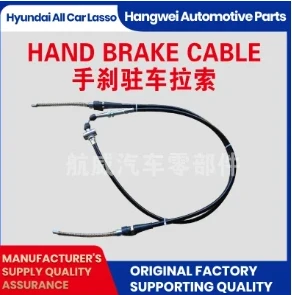Optimal Connection Solutions for Gear Linkage Cables in Automotive Systems
The Importance of Gear Link Cables in Automotive Systems
In the world of automotive engineering, precision and efficiency are paramount. Among the numerous components that ensure vehicles operate smoothly, the gear link cable holds a significant place. This often-overlooked element plays a critical role in connecting the gear shifter to the transmission, allowing drivers to change gears seamlessly. In this article, we will delve into the functions, importance, types, and maintenance of gear link cables to highlight why they are indispensable to modern vehicles.
Understanding Gear Link Cables
Gear link cables are mechanical components that enable the transfer of motion and force from the gear shifter to the transmission. In essence, they act as a bridge between the driver's intentions and the vehicle's response, allowing for the precise selection of gears. These cables are designed to withstand the rigors of automotive environments, including exposure to heat, humidity, and mechanical stress.
Typically, gear link cables consist of a flexible outer casing that encases a thinner inner cable. The outer casing helps protect the inner cable from external elements while providing a smooth pathway for it to move as the gear shifter is engaged. The inner cable is attached to the gear lever and is responsible for transmitting the force needed to shift the gears within the transmission system.
The Importance of Gear Link Cables
The functionality of gear link cables is vital for the overall performance of a vehicle. Without these cables, drivers would struggle to change gears, leading to a plethora of issues, including difficulty in acceleration, reduced fuel efficiency, and potential damage to the transmission system itself. Properly functioning gear link cables ensure that drivers can shift gears smoothly and confidently, enhancing the driving experience.
Moreover, gear link cables contribute to the safety of a vehicle. Quick and accurate gear changes are essential, particularly in high-pressure situations such as overtaking or navigating steep inclines. A malfunctioning gear link cable could result in delayed gear shifts, increasing the risk of accidents. Hence, the reliability of these cables is critical for both driver satisfaction and road safety.
gear link cable

Types of Gear Link Cables
There are several types of gear link cables, each designed for specific vehicle models and transmission systems. The two main categories are manual and automatic link cables. Manual gear link cables are typically used in vehicles with manual transmissions, allowing the driver to have direct control over gear selection. In contrast, automatic link cables are designed for vehicles with automatic transmissions where the system itself manages gear changes based on speed and engine load.
Within these categories, variations exist based on the specific requirements of different vehicles. For example, performance-oriented cars may utilize heavy-duty gear link cables designed to withstand intense use, while standard passenger vehicles may employ lighter, more economical cables.
Maintenance of Gear Link Cables
To ensure optimal performance of gear link cables, regular maintenance is essential. Factors such as wear and tear, corrosion, and damage can lead to cable failure. Consequently, drivers should periodically inspect their gear link cables for any signs of fraying, rust, or other forms of degradation.
Lubrication is crucial for the longevity of these cables. Regular application of appropriate lubricants can reduce friction, ensuring smooth operation. Additionally, proper adjustment of the cable tension can prevent excessive wear and improve responsiveness.
In conclusion, gear link cables are a vital component of automotive systems that play a crucial role in the operation and safety of vehicles. Their ability to facilitate smooth gear changes enhances the overall driving experience and contributes to the longevity of the transmission system. Whether in manual or automatic vehicles, these cables require regular maintenance to ensure they function correctly. Ultimately, understanding the significance of gear link cables can help drivers appreciate their vehicles better and contribute to safer driving practices on the road.
-
Workings of Clutch Pipe and Hose SystemsNewsJun.04,2025
-
The Inner Workings of Hand Brake Cable SystemsNewsJun.04,2025
-
The Secrets of Throttle and Accelerator CablesNewsJun.04,2025
-
The Hidden Lifeline of Your Transmission Gear Shift CablesNewsJun.04,2025
-
Demystifying Gear Cables and Shift LinkagesNewsJun.04,2025
-
Decoding Clutch Line Systems A Comprehensive GuideNewsJun.04,2025
